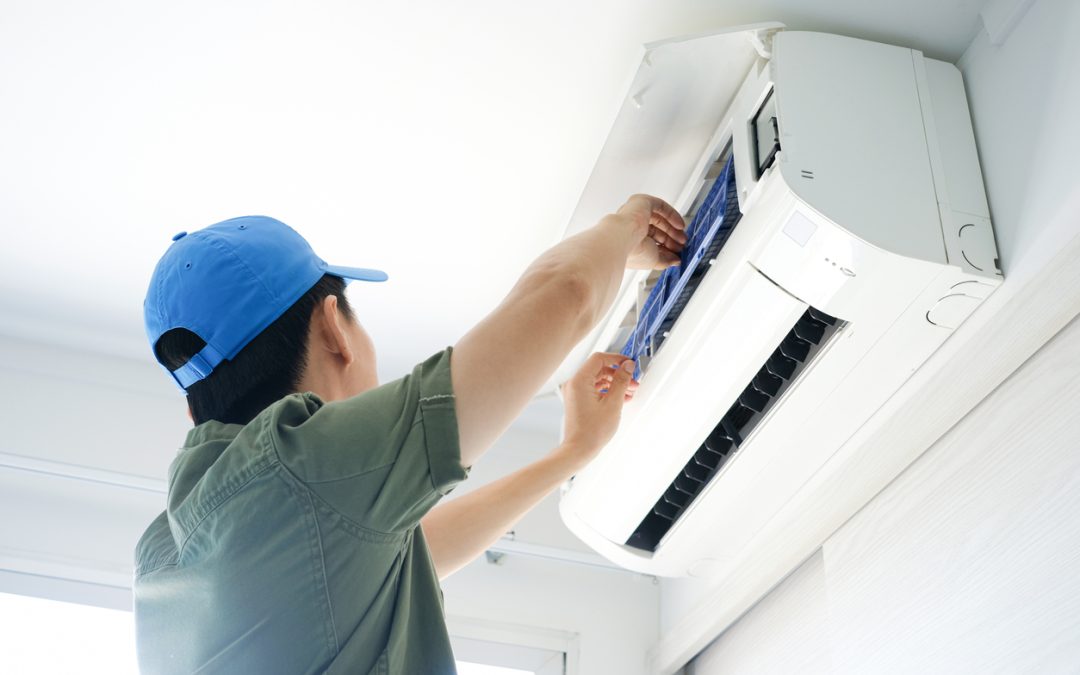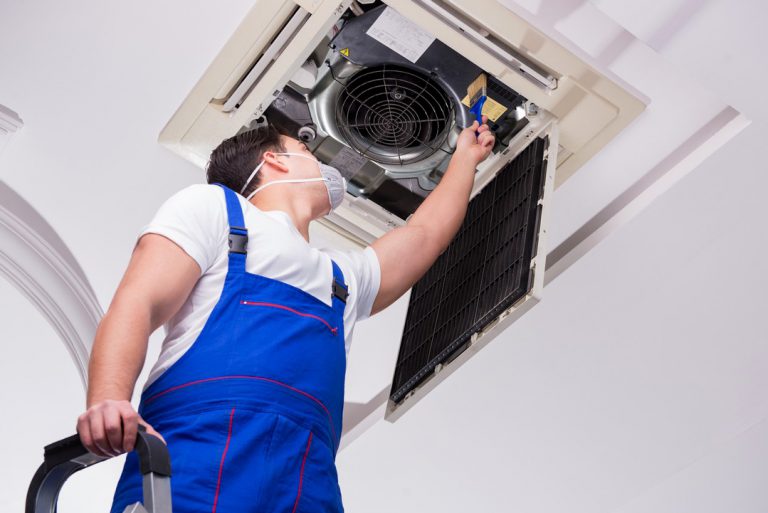Did you understand that 85% of all air conditioning issues can be fixed without the requirement for expert help? When your a/c begins acting up, understanding where to begin fixing is important.
From odd noises to warm air blowing out, these concerns can be aggravating. But anxiety not, just like a couple of simple actions, you might be able to detect and repair the issue yourself.
So, prior to you consider calling a specialist, let's discover some common a/c troubles and exactly how you can tackle them head-on.
Secret Takeaways
- Address unusual sounds promptly to stop more damage.
- Guarantee proper air movement by cleansing filters and uncloging vents.
- Examine cooling agent degrees and clean elements for optimal air conditioning.
- Frequently preserve and clean the air conditioning to prevent leakages and breakdowns.
Uncommon Sounds
If your a/c is making unusual sounds, do not disregard them as they could suggest a potential concern. One common resource of these sounds could be compressor troubles. A loud knocking or clanking sound might recommend that there are concerns with the compressor, which is an essential component in charge of distributing refrigerant. Disregarding this might bring about further damage and a possible malfunction of the system.
Another feasible root cause of uncommon noises could be follower concerns. If you hear shrilling or screeching noises originating from your air conditioning device, it might direct towards troubles with the follower electric motor or blades. The fan plays an essential duty in guaranteeing appropriate air flow and ventilation within the system, so attending to any fan-related noises without delay is necessary to stop any kind of interruptions in cooling efficiency.
Weak Air flow
Experiencing weak air movement from your a/c device can be a sign of underlying concerns that require to be resolved without delay. Two typical culprits for this problem are a dirty filter and blocked vents. A filthy filter restricts the air movement by capturing dust and particles, making it harder for air to pass through. ac not cooling This can cause minimized air movement and an overworked system. To resolve this, situate the air filter in your unit and either tidy or change it according to the manufacturer's suggestions.
Blocked vents can likewise prevent airflow. Examine all the vents in your house to ensure they're open and unhampered. Sometimes furnishings or items positioned near vents can inadvertently obstruct the airflow. By rearranging any obstructions, you can assist boost the blood circulation of great air throughout your space. If these steps don't enhance the air flow, it might be time to contact a professional technician to examine your a/c system even more.
Warm Air Blowing
When cozy air is blowing from your air conditioning system, it might indicate a possible issue that requires troubleshooting. Below are some vital areas to check:

- Thermostat setups: See to it that your thermostat is readied to the proper temperature level and cooling down setting. Sometimes, an easy adjustment to the setups can settle the problem of warm air blowing from the air conditioner unit.
- Cooling agent levels: Reduced cooling agent levels can create the a/c unit to blow warm air. If you think this is the problem, it's best to speak to a professional cooling and heating professional to examine and fill up the cooling agent as required.
- Air filter and condenser coils: A blocked air filter or filthy condenser coils can limit air movement and impede the air conditioning process, leading to cozy air being burnt out. On a regular basis examine and replace the air filter as needed, and see to it the condenser coils are tidy and free from particles to aid preserve peak cooling performance.
Leaking or Trickling Water
Check for water leakages or leaking from your a/c unit to recognize possible problems that need interest. Leaking water can be an indicator of troubles such as condensation accumulation or a clogged up drainpipe.
Condensation build-up takes place when cozy air passes over the chilly evaporator coils within your a/c unit. This process triggers wetness in the air to condense into water droplets. Normally, this water is accumulated and drained away correctly. However, if you discover water leaking from your system, it can show a clog in the drainage system.
A blocked drain is a common concern that can lead to water leakage. Gradually, dust, dirt, and algae can gather in the drain line, triggering a clog. This obstruction prevents water from being effectively drained pipes, causing leaks or leaks from the unit.
To resolve these problems, you can attempt getting rid of the drainpipe line using a wet-dry vacuum or a mix of bleach and water to get rid of any kind of blockages. Normal maintenance and cleaning can help stop condensation buildup and blocked drains pipes, maintaining your AC unit running efficiently.
AC Not Switching on
If your a/c system isn't turning on, initial examine the source of power and thermostat settings to troubleshoot the problem.
- Source of power: See to it that the ac unit is plugged in correctly and that the outlet is working. In some cases a tripped breaker or a blown fuse could be the factor for a lack of power to the AC unit.
- Thermostat Setups: Evaluate the thermostat to ensure it's readied to a temperature level listed below the present area temperature level. If the thermostat is battery-operated, replace the batteries to see if that solves the issue.

- Air Filter: A filthy air filter can restrict air flow and create the a/c system to close down. Analyze the air filter and change it if it shows up stopped up or unclean.
Frequently Asked Questions
Just How Can I Enhance the Total Efficiency of My Air Conditioning Unit?
To enhance your air conditioning system's effectiveness, beginning by obtaining air duct cleaning done consistently. This helps protect excellent airflow.
Next off, execute an insulation check to prevent any air leaks that can make your system work harder.
These easy steps can make a large difference in just how well your air conditioning system operates, maintaining you awesome and saving you cash on power costs.
What Are Some Typical Upkeep Tasks I Can Carry Out to Keep My Air Conditioner Running Smoothly?
To keep your air conditioner running smoothly, make sure to clean the coils regularly and inspect the cooling agent degrees. These tasks are vital for keeping the efficiency of your unit.
By cleaning the coils, you guarantee correct air movement and air conditioning. Keeping an eye on cooling agent degrees helps avoid problems like overheating.
Normal upkeep such as this will keep your cooling system working successfully and expand its life-span.
Are There Any Kind Of Safety Tips I Should Understand When Troubleshooting My Cooling Unit?
When repairing your air conditioning system, bear in mind to focus on electric safety to stop mishaps.
Always turn off power prior to dealing with your cooling and heating system.
Beware of refrigerant leakages, as they can be dangerous.
Normal a/c assessments and condenser cleaning can assist preserve your unit and prevent safety dangers.
Remain cautious and comply with safety and security standards to ensure a smooth repairing procedure and a well-functioning cooling system.
Just how Usually Should I Change the Air Filters in My Air Conditioning Unit?
You must change the air filters in your a/c device every 1 to 3 months for leading performance.
The frequency of filter substitute depends upon factors like the kind of filter you make use of and how commonly you run your ac system.
High-efficiency filters might require transforming less typically, while standard filters need to be changed more frequently to keep your device running efficiently.
Normal filter changes guarantee reliable airflow and better air top quality in your home.
Can I Mount a Programmable Thermostat to Assist Regulate the Temperature Level in My Home More Effectively?
Yes, you can install a programmable thermostat to aid manage your home's temperature level better. By establishing particular temperatures for various times of the day, you can accomplish power cost savings.
To install, see to it to turn off power, tag cords, place the new thermostat, connect the wires, and program it according to your routine.
Take pleasure in better temperature control and potential energy financial savings with a programmable thermostat.
Verdict

To wrap up, troubleshooting typical a/c concerns does not have to be a tough task. By following these straightforward DIY actions, you can quickly deal with problems like:
- unusual sounds,
- weak airflow,
- warm air blowing,
- leaking water,
- an unit that will not switch on.

Remember to always prioritize safety and security and speak with an expert if required.
With a little perseverance and know-how, you can maintain your AC running smoothly and your home cool and comfortable.
